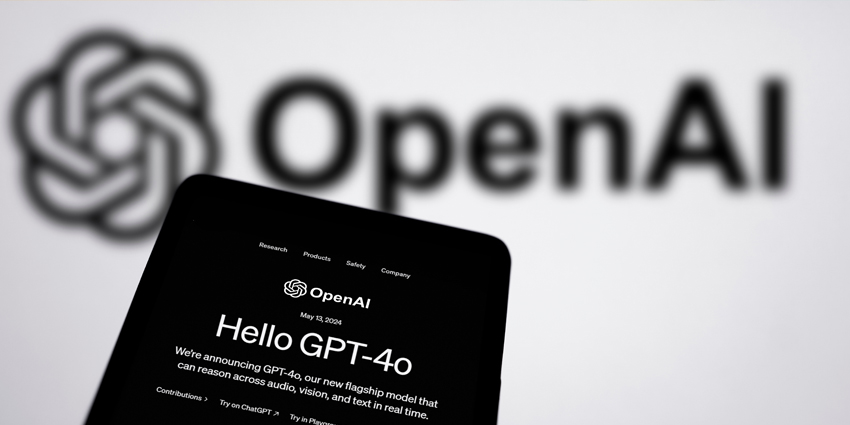For most companies, the benefits of advanced AI tools, like OpenAI’s GPTs, DALL-E, ChatGPT, and more are becoming increasingly apparent. Deploying OpenAI tools into your organization can help you turbocharge productivity and efficiency, boost creativity, and even reduce operational costs.
However, planning a successful deployment can be complicated. Our proprietary research found that countless companies still face significant challenges with user training, encouraging adoption, and integrating OpenAI technologies with existing workflows.
The right approach to deploying OpenAI tools isn’t just crucial to boosting your return on investments, it can also be the key to minimizing risks associated with data security, privacy, and even AI ethics. So, how do you set your company up for success? This OpenAI deployment guide will give you the insights you need to make the most of your AI roadmap.
- Not sure which OpenAI tools have the most to offer your teams? Check out our comprehensive guide to comparing OpenAI technologies here. Alternatively, boost your chances of a successful implementation with our guide to maximizing the ROI of OpenAI tools.
Deploying OpenAI Tools: Pre-Deployment Considerations
Before you dive into the technical aspects of deploying OpenAI tools, preparation is crucial. First, look at your current infrastructure. Different OpenAI tools and models require different levels of computing power, so make sure you have the hardware, storage solutions, and network bandwidth needed to make the most out of the models you’re using.
While you’re assessing your existing technology and tools, identify crucial integration requirements. Which workflows and systems are going to benefit most from OpenAI solutions, like GPT-4o or DALL-E, and how are you going to ensure your technologies are aligned?
Other things to consider before you deploy OpenAI technology include:
- Team alignment: A successful deployment of AI tools usually requires cross-functional input and support from business leaders, data scientists, IT professionals, and everyday employees. Make sure everyone is aligned on objectives, roles, and even the potential risks and challenges of using AI tools.
- Data preparation: All OpenAI tools (as well as other generative AI solutions) are only as good as the data they have access to. Make sure you have accurate data you can use to fine-tune your systems and tailor your technology to your specific use cases.
- Potential risks and challenges: Analyze the possible risks and challenges of deploying OpenAI technologies into workflows. Think about how you’re going to handle managing AI teams, ensuring data security, and navigating integration challenges.
OpenAI API Setup: Accessing and Configuring APIs
Next, it’s time to start experimenting with OpenAI’s APIs. Notably, there are plenty of pre-built solutions you can access without worrying about OpenAI API setup, such as ChatGPT, DALL-E 3, and even Sora. But if you’re focused on integrating OpenAI into existing business processes, you must familiarize yourself with the company’s API collection.
Start by identifying the specific APIs you need. For instance, if you’re looking for a versatile solution for content creation, research, and customer service, you might want to tap into the power of GPT-4o – OpenAI’s leading multimodal solution. Alternatively, you might explore GPT-o1 for advanced reasoning tasks, or DALL-E APIs for image generation.
Once you’ve chosen the APIs you need, you’ll need to create an OpenAI account, and generate your API key. For specific needs – like higher throughput or enterprise-grade requirements – consider OpenAI’s provisioned deployments or enterprise options. If your organisation lacks in-house development expertise, you might need to consider working with a deployment partner.
Use OpenAI’s documentation and resources to integrate your APIs into your existing workflows seamlessly. The AI leader has plenty of client libraries for languages like Python and Node.JS to help you embed functionality into your applications.
Integrating OpenAI in Business Workflows: Scaling Adoption
The next step in deploying OpenAI technologies for your teams is experimenting with the tools you’ve created. Before diving into an enterprise-wide deployment strategy, it’s usually a good idea to start with simple pilot projects.
Find the “AI champions” in your team most likely to feel comfortable using new AI systems in their workflows, and ask them to use your technology for specific tasks. Monitor the impact the tools have on your team members by gathering feedback and assessing metrics related to efficiency gains, cost savings, or overall creativity and performance.
Based on your pilot program, start developing a scaling strategy to help more of your employees access these innovative tools. Create training programs for new users, or consider assigning specific team members to the task of teaching staff how to make the most of OpenAI systems.
Think about how you can build on the benefits you’re already getting from OpenAI technologies. For instance, if your GPT-4o bot is helping you streamline customer service, consider using it to enhance internal IT support or streamline human resources tasks.
Deploying OpenAI Tools: Maintaining Compliance and Security
No matter what your use cases might be for AI tools, it’s crucial to prioritize compliance, data security, and ethical AI usage. Notably, OpenAI does offer tools and APIs that comply with various data security strategies. However, it’s still up to you to make sure you’re following AI deployment best practices, and keeping your information safe.
- Train your employees: Don’t just focus on teaching team members how to use AI tools; make sure they’re aware of ethical best practices and understand how to protect sensitive data when training or interacting with AI bots.
- Implement guardrails: Customize your AI technologies with guardrails that minimize risks like AI hallucinations or bias. Constantly monitor the output of your AI technologies for signs of mistakes or potential data security threats.
- Create clear policies: Establish protocols to prevent the misuse of AI. For instance, make sure your staff members are following strict guidelines when creating images with DALL-E 3, to ensure they don’t accidentally create “deepfakes” or misleading content.
Make sure you’re staying up to date with the latest governance, compliance, and security guidelines as they emerge too – reading up on things like the EU AI Act, and new data privacy laws.
AI Deployment Best Practices: Managing AI Teams
One final thing to think about when you begin deploying OpenAI technologies, is how you’re going to handle managing AI teams, and driving constant adoption. Here are some quick tips you can follow to improve the impact of your OpenAI tools:
- Upskill and Educate Your Team: Provide regular training on the latest OpenAI tools and technologies, from GPT-o1 for advanced reasoning, to Sora for video generation and beyond. Regularly update your training strategies based on your evolving AI roadmap.
- Define Clear Roles and Responsibilities: Assign specific responsibilities to each team member, such as data preparation, algorithm fine-tuning, or implementation oversight. Define measurable objectives to track the impact of AI projects and keep everyone aligned.
- Prioritize Constant Feedback: Actively seek feedback from your employees. Find out where they struggle with AI adoption, and ask for their advice on scaling intelligent technologies into new processes, such as content creation or product design.
- Stay Agile: Deploying OpenAI tools isn’t something you just do once and then forget about. Keep experimenting and exploring new opportunities. Use agile frameworks to facilitate adaptability and ensure your teams can respond quickly to changing business needs.
- Seek Expert Support: When necessary, look for experts to help you upgrade the performance of your AI tools and workflows. Collaborate with data analysts, developers, integration professionals, and even data security specialists.
Deploying OpenAI Tools the Right Way
Creating a comprehensive plan for deploying OpenAI technologies into your business workflows can seem complicated. However, with a little planning, plenty of collaboration, and an agile mindset, any organization can reap the benefits of OpenAI’s cutting-edge solutions.








